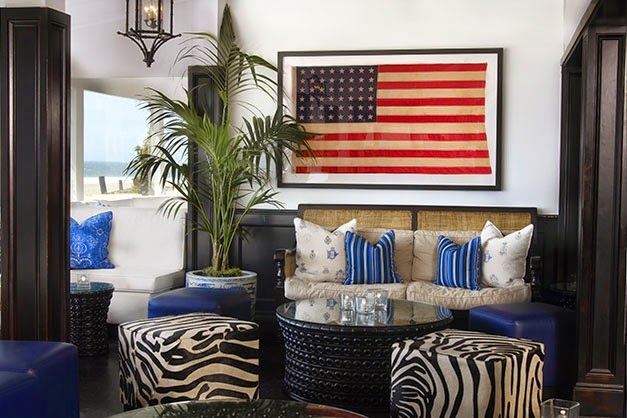Flat--Consisting of a piece of flat fabric without any pleats, folds, or channels, this type of Roman shade is good for windows where you will not be raising or lowering the shade often. The fact that it does not have any pleats means that the fabric does not fold up neatly or quickly when raised. But a flat Roman shade still provides light control and privacy while bringing color and pattern to a room. And this style in particular lends itself to prints since there are no channels or pleats to interrupt a pattern repeat.
Plain or Pleated--This style is much like a flat Roman but with seams every eight to ten inches to help ease the shade in raising or lowering. As you can imagine, a tight pattern repeat would be interrupted by the seaming. As with any genre of knowledge, nomenclature can vary and I have seen this referred to as a Rear Tucked Roman shade. The Pleated name also can refer to a different type of shade, one we will see a few points down.
Relaxed or European--Here we have another variation of the flat shade but with a drooping center bar at bottom which gives the shade a casual, country appeal. But done with the right fabric, it could also read as extremely elegant.
Hobbled or Soft Fold (I have also seen this style referred to as Teardrop)--This style of Roman shade is made of ripples of soft folds that fall on top of one another, giving the shade dimension and softness. I would advise judicious use of this style as it can look overblown or gaudy depending on material and location.
Knife or Ribbed (I have also seen this style referred to as Slatted)--For this Roman shade, dowels are sewn into pockets every eight to ten inches or so. They can be attached at the rear of the shade so the front has a seam, in which case it is called a Knife or Knife Edge Roman shade. If the dowel pockets are in the front (with seam in the rear), this is generally called a Ribbed Roman shade.
 |
| Knife Edge with dowel pockets in rear |
 |
| Ribbed with dowel pockets in front |
Happy designing!




















